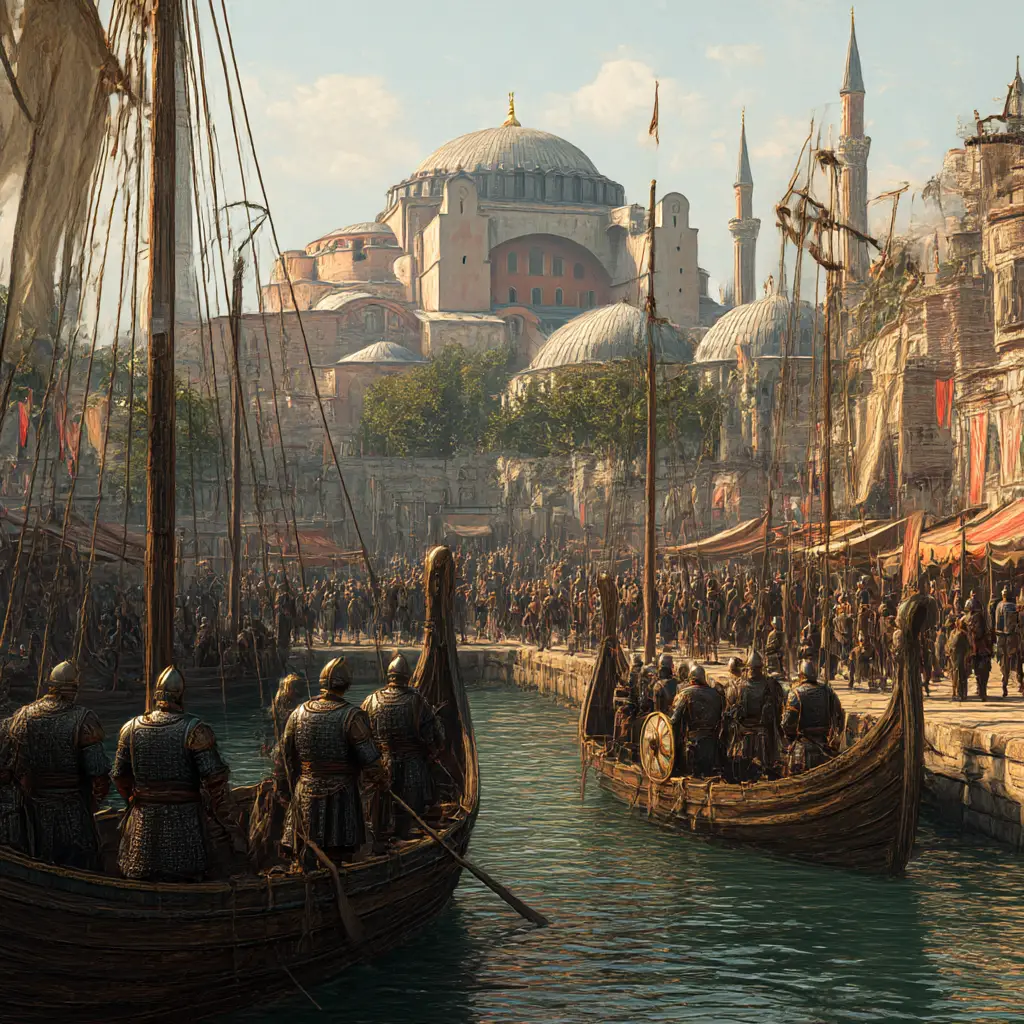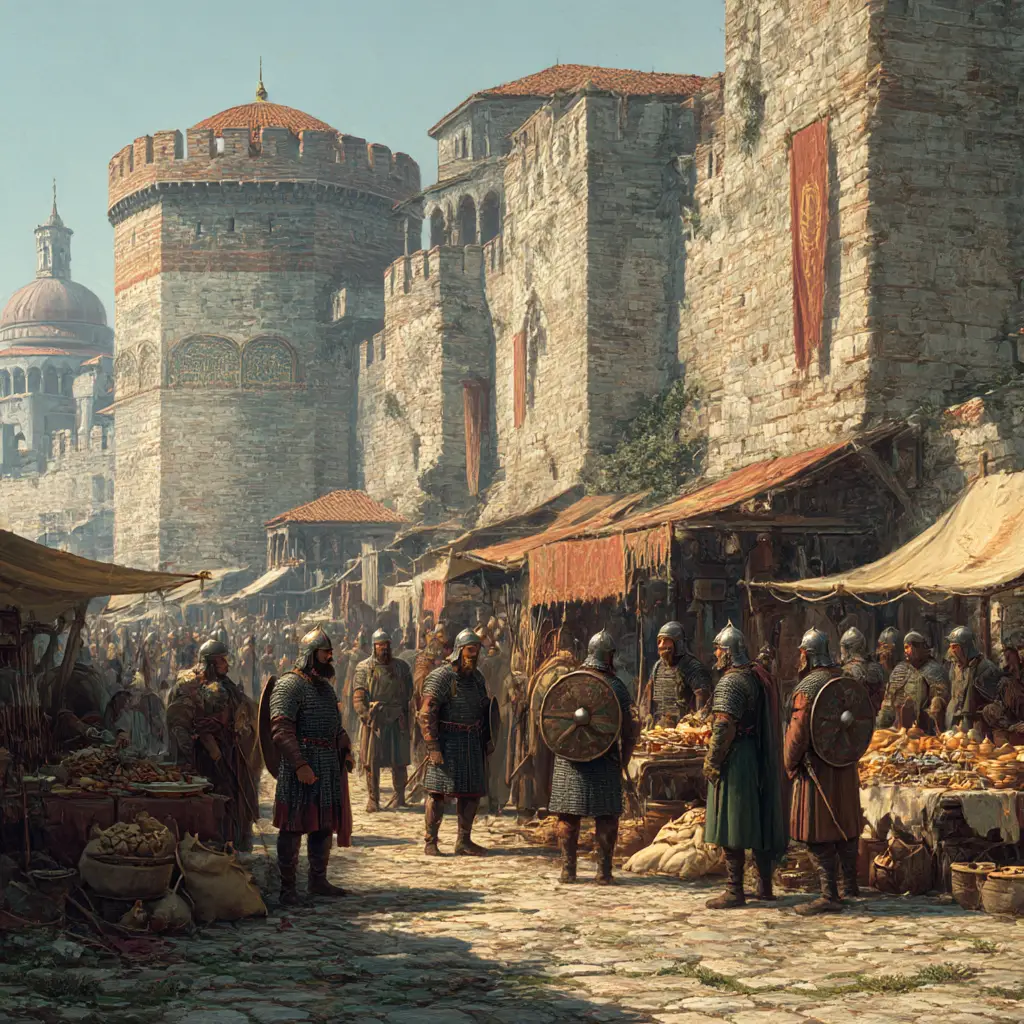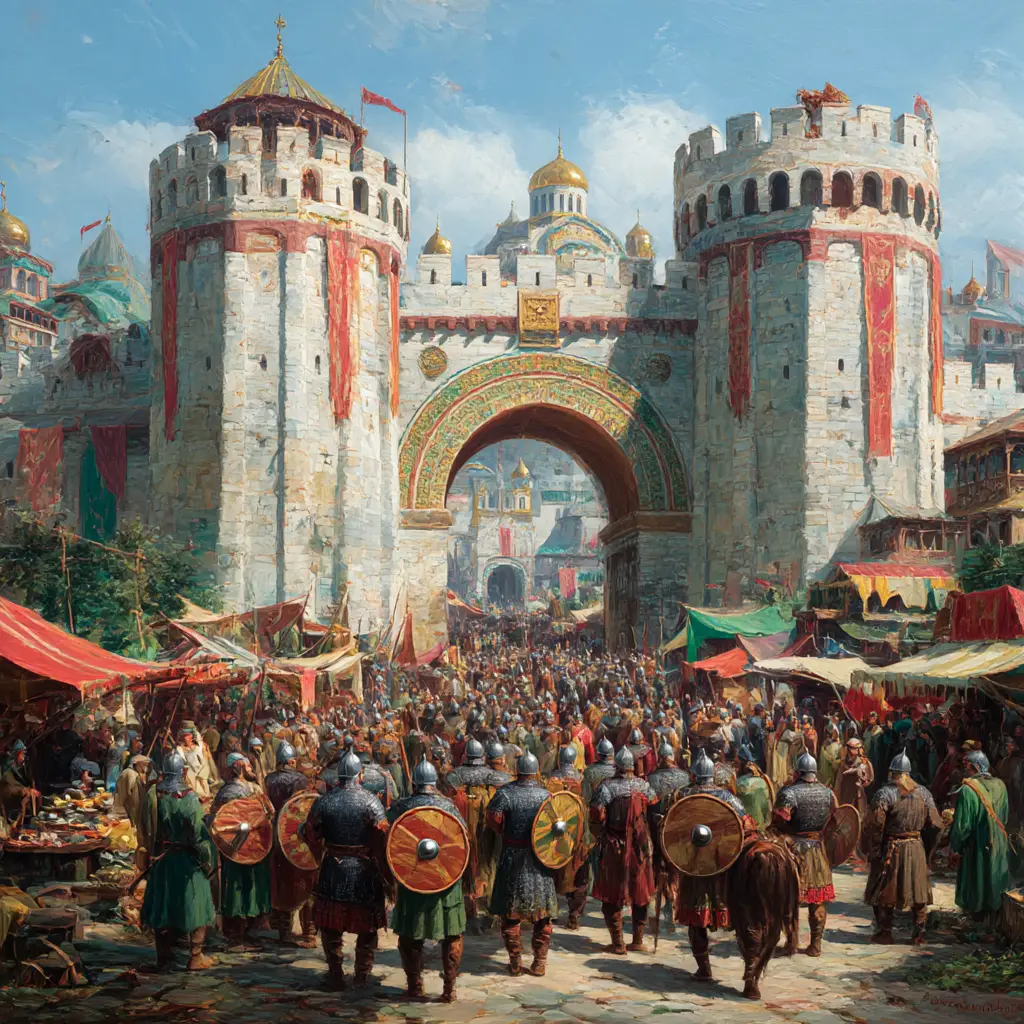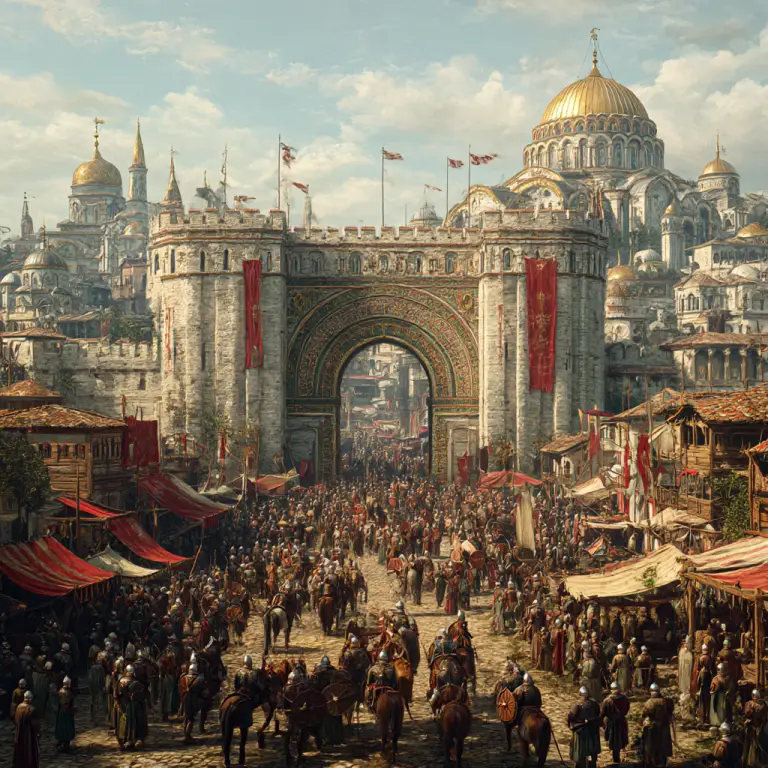The Rus Vikings, often described as the seafaring traders and warriors of the north, forged a unique and lasting relationship with Constantinople, known to them as Miklagard, meaning the Great City. From the ninth century onwards, fleets of Viking longships travelled along the river routes of Eastern Europe, moving down the Dnieper and Volga rivers to reach the Black Sea and beyond. Their journeys were not only military in nature but also commercial, establishing important trade connections between Scandinavia, the lands of the Rus, and the Byzantine Empire.
The attraction of Miklagard lay in its immense wealth and splendour. As the capital of the Byzantine Empire, Constantinople was a city of unrivalled importance, famous for its markets, treasures, and powerful rulers. Rus merchants arrived with valuable northern goods such as furs, amber, beeswax, and slaves, trading them for silk, wine, spices, jewellery, and coins minted in the imperial workshops. These exchanges brought prosperity to both sides and linked distant northern Europe with the Mediterranean world.
The relationship was not always peaceful. Rus fleets raided the outskirts of Constantinople on several occasions, testing the city’s formidable defences and the famed use of Greek fire by the Byzantines. Yet these clashes were followed by treaties that secured trading rights and allowed the Rus to settle within the city’s bustling districts. Over time, cooperation and mutual benefit became the defining feature of their presence.
One of the most significant outcomes of this relationship was the establishment of the Varangian Guard. By the late tenth and early eleventh centuries, Rus warriors were recruited into the Byzantine emperor’s elite bodyguard. Known for their loyalty and fearsome combat skills, the Varangians stood as protectors of the imperial throne and left a lasting mark on Byzantine military history.
The legacy of the Rus Vikings at Miklagard demonstrates the remarkable adaptability of the Norse peoples. From raiders to traders, and ultimately to trusted imperial guards, they carved out a role at the heart of one of the greatest cities of the medieval world. Their presence in Constantinople not only shaped their own history but also strengthened the cultural and economic ties that bridged the northern and eastern worlds.



